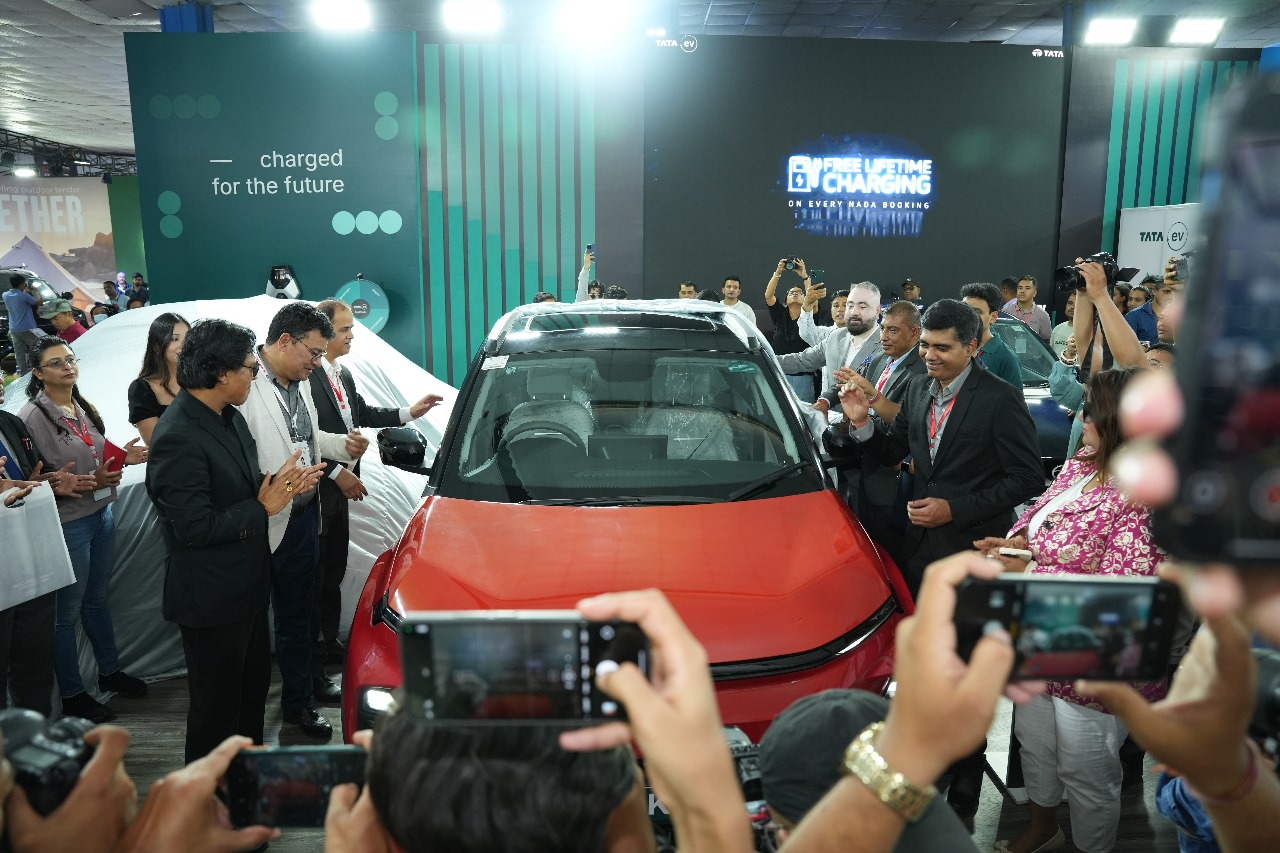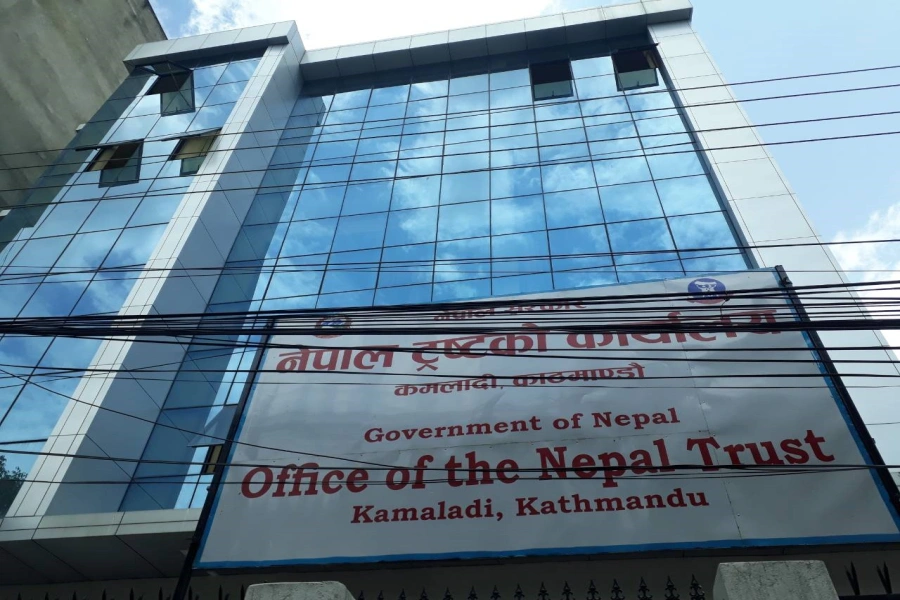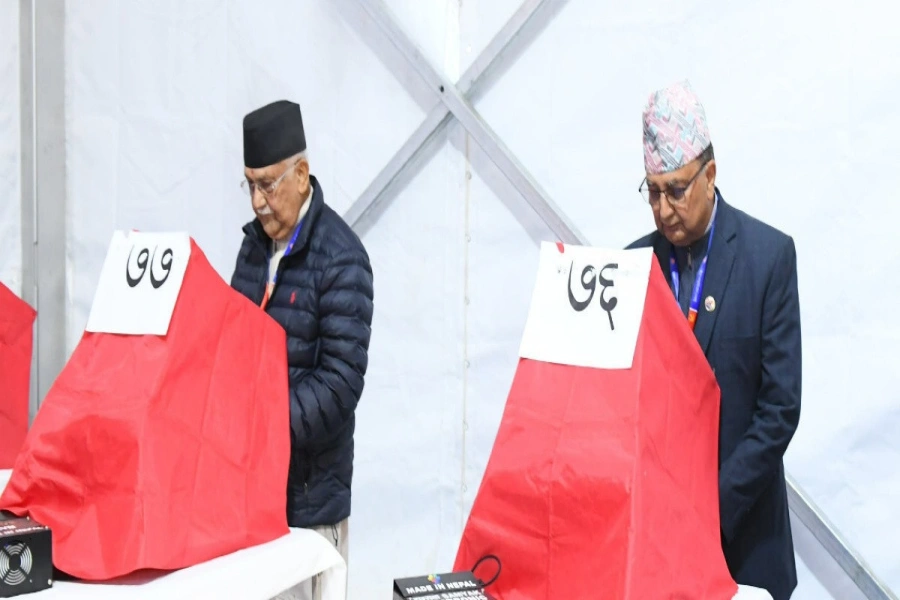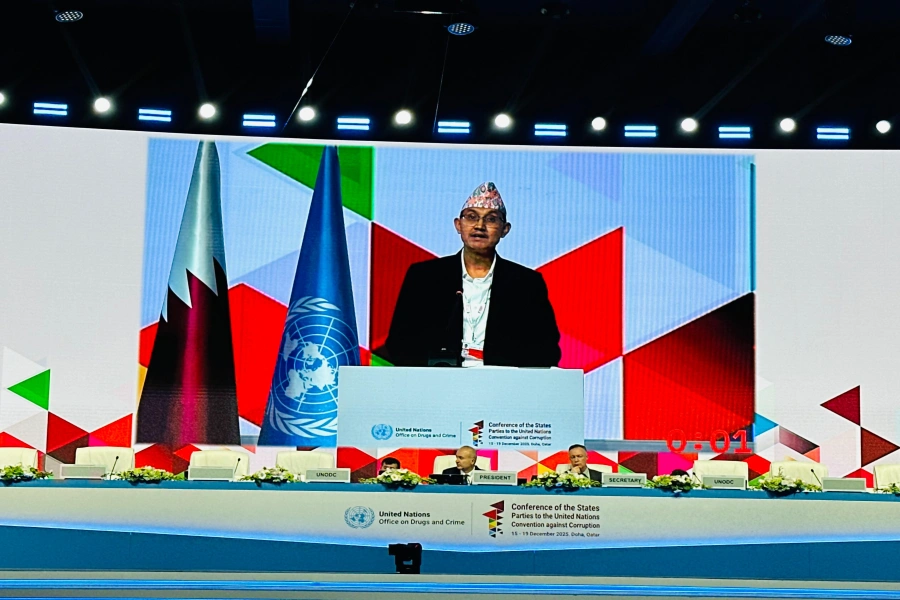Tata Motors unveiled the Tiago EV in Nepal, alongside the fuel-powered Punch model and Tata Nexon EV Max during the ongoing NADA Auto Show 2023. Republica had the opportunity to sit down with Mayank Baldi, Head of International Business for Passenger Vehicles at Tata Motors, who was on a visit to Nepal to launch the new products. The conversation revolved around the recently launched Tiago EV and Tata Motors' comprehensive presence in Nepal, encompassing its growth trends. Excerpts:
Can you provide us a brief overview of Tata Motor’s presence in the Nepalese automobile market, including the recent growth trends?
Tata Motors has a longstanding presence in Nepal's automobile market. The introduction of electric vehicles (EVs) has elevated Tata's brand perception, making it a prominent player since 2019-2020. The company strategically aligns with evolving customer expectations, focusing on feature-rich EVs and addressing macroeconomic shifts favoring electric mobility in Nepal. The government's support, including lower taxes on EVs, further propels this transition. Tata Motors emphasizes a holistic approach, considering not only the product but also the supporting ecosystem crucial for customer confidence. They have established a strong charging network, a battery facility, and an EV learning center to educate and engage with customers. Tata Motors aims for a long-term, community-centric presence in Nepal's evolving EV market.
Tata Motors launched the Tiago EV, following the success of the Nexon EV. Can you shed light on the target market for the Tiago EV?
Moving beyond rigid categorizations based on vehicle segments like CUV, SUV, or hatch, we've observed an evolution in positioning. The Nexon EV's success highlighted a growing demand for enhanced features and a desire for a broader product range at affordable prices. Affordability, in this context, is about fitting an EV comfortably within a buyer's budget, considering their financial commitments.
The Tiago EV is designed to fulfill this affordability criterion. As the Nexon EV elevated into a segment where features and outdoor driving experiences matter significantly, the Tiago EV now steps in as a viable option for a broader audience. It caters to individuals currently opting for two-wheelers or those transitioning from two-wheelers to four-wheelers. The pricing is structured to make EVs accessible and attractive, ensuring a transformed driving experience.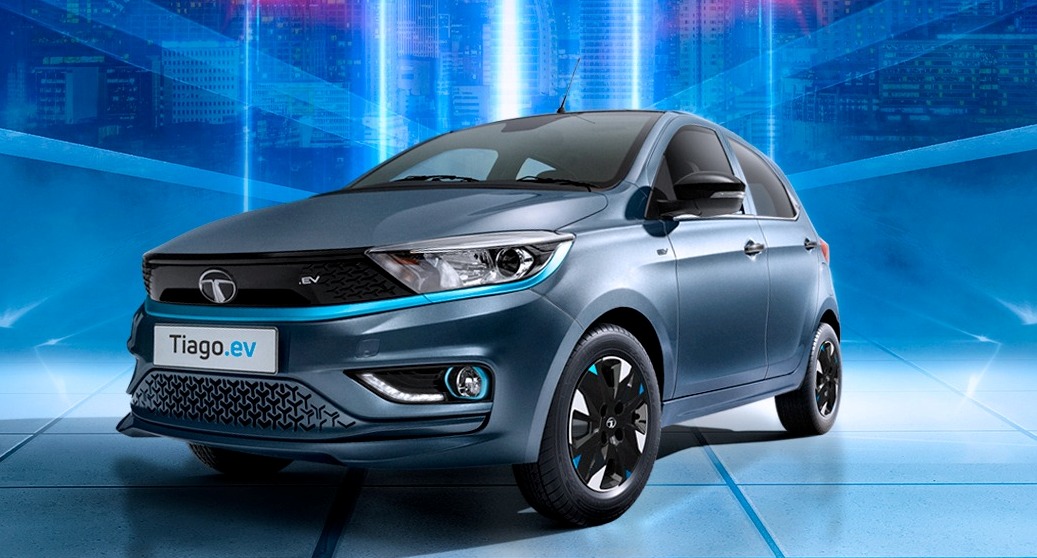
Miyapma Rai wins Tata Tiago EV in Rohto Mentholatum Nepal's ‘Ca...

Our aim with the Tiago EV is to offer a product and pricing that appeals to various segments. It isn't limited to two-wheeler users, second-hand car buyers, repeat buyers, or specific vehicle categories like premium hatchbacks, SUVs, or CUVs. It's a versatile offering open to everyone, aligning with our commitment to affordability and accessibility.
How does the Tiago EV differentiate itself in terms of features, and what do customers need to know?
When it comes to features, we take a comprehensive approach. We thoroughly analyze competitors, assess global trends, and determine the precise value of each feature. It's not about offering everything, but about providing features that align with customer needs and are genuinely appreciated. We tailor our offerings to meet the demands of markets like this one. The Tiago EV represents the beginning of our journey, and we're committed to evolving and enhancing its features. We continuously evaluate what competitors offer, what customers are willing to pay for, and ensure we provide it at the right price. This approach is consistent across all our products, including the Nexon EV, reflecting our dedication to offering value and meeting customer expectations.
Are you anticipating a growing preference for affordable EV products among consumers? Does the Tiago EV appeal to a different customer base compared to the Tiago ICE? Do you see first-time car buyers considering EVs with the launch of the Tiago EV?
Absolutely, the data and market trends strongly indicate a continued preference for EVs. There are clear enablers driving this shift. Factors such as easy repair and servicing, attractive buyback and resale values, robust warranty offerings, especially for the crucial battery component with an 8-year warranty, all make EVs an enticing long-term choice for consumers. Government incentives, including lower taxes on EVs, further bolster this trend. The momentum is set to rise, and our goal with Tiago EV is to meet the evolving features, aspirations, and market segments of customers.
Now, in comparison to Tiago ICE, it's important to recognize the distinct needs of various consumers in the classic ICE versus EV debate. Some customers, particularly those driving shorter distances within the city and seeking automatic, noiseless, and effortless vehicles, find EVs like Tiago appealing. Moreover, the price advantage adds to the appeal for this segment, which includes city dwellers and younger, automatic transmission enthusiasts.
On the other hand, traditional ICE players, often valuing the experience of longer drives, the sound of diesel or the unique feel of running a petrol or diesel engine, may still prefer ICE vehicles. We acknowledge this and aim to cater to both segments, ensuring our offerings address the preferences and requirements of different customers. The shift in customer preferences is inevitable, and our role is to support and drive this momentum forward, meeting the evolving demands of the market.
What volume of Tiago EV sales do you anticipate in the Nepali market? Do you envision the Tiago EV surpassing Nexon EV in sales?
Our focus is not on creating competition within our own brand between Nexon and Tiago EV. However, our ambitions and expectations are significant. It's premature to pinpoint an exact number at this stage, especially with the ongoing NADA show where we anticipate a substantial footfall of around 40,000 customers. Our primary goal is to impress every visitor not only with the product package but also with the broader philosophy of embracing EVs. If we can achieve this, sales numbers will naturally follow as a secondary outcome.
Our aspirations are substantial, but specific projections are better suited for a review rather than the present moment. With Tiago EV, we're setting our sights high and extending an invitation to all potential customers to visit us. Every customer is a potential buyer for Tiago EV, and we welcome them to explore and experience it firsthand.
When Nexon EV was launched, customers faced long waiting times. How is the situation for Tiago EV, and what is the production capacity for this model?
I'm delighted to share some positive updates. Since the introduction of Nexon EV, we've been actively driving momentum to gauge market demand. Initially, EV adoption was in its early stages, making demand uncertain.
Now, after two years, we have a clear understanding of market preferences and demand. Over this period, we've significantly increased our production capacity for both Tiago and Nexon. Customers making a purchase can expect a prompt delivery without prolonged waiting time. We can provide precise delivery estimates right at the showroom, ensuring customer satisfaction. Supply challenges have been addressed, and customers can rely on receiving their cars within the committed time frame. We prioritize our customers' experience and ensure a seamless purchasing process.
Nepal's automotive market presents diverse terrain and climatic challenges. How does Tata Motors tailor its products and sales strategies to meet the specific needs and preferences of Nepali customers?
Before any car is launched, it undergoes a rigorous testing process, which includes exposure to extreme conditions like severe cold, intense heat, and varied terrains. This extensive testing covers millions of kilometers to ensure the vehicle's performance and durability. This practice applies to all our models, including Tiago EV, following in the footsteps of Nexon EV. It's important to clarify that this testing isn't about proving anything but rather ensuring our customers' satisfaction and peace of mind.
For instance, if someone were to take their car to challenging locations like Jomsom in the north, we want them to be confident that our vehicles can handle it. Our batteries are designed to operate efficiently in temperatures as low as -20 degrees Celsius, demonstrating the level of testing involved, which also includes scenarios like extreme weather, dusty environments, high temperatures, and even fire resistance.
Moreover, our vehicles are tested on demanding terrains. Only when we are fully convinced of their capabilities do we introduce them to the market. This thorough testing is a testament to our commitment to delivering reliable and resilient products, not just in Nepal but in all markets we serve. While no one explicitly asks us to do it, we do so to provide consumers with the assurance that their investment in our products is backed by extensive testing and long-term performance.











